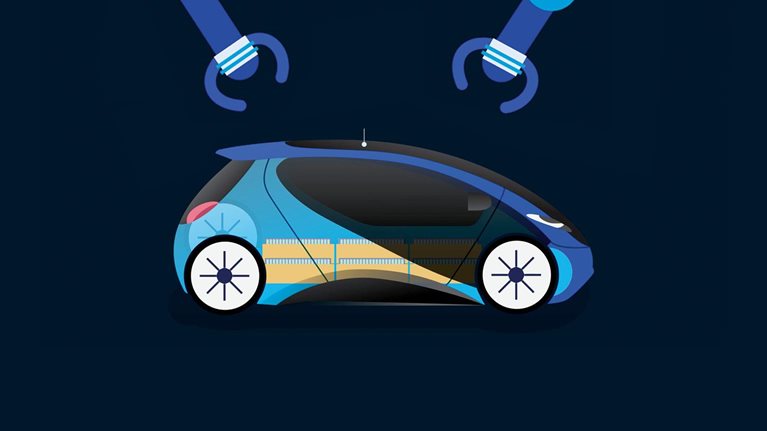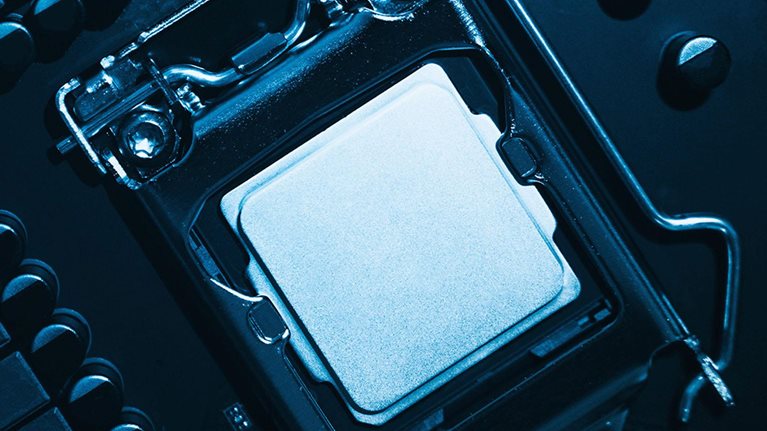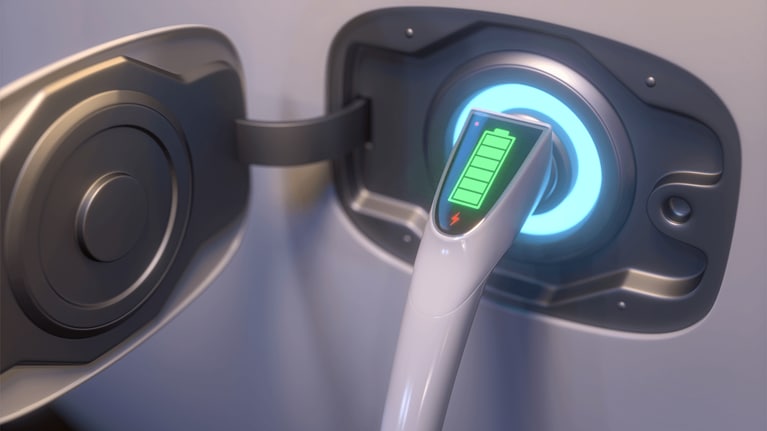Luxury-vehicle brands stand apart. Where the mainstream market has largely stagnated, with little to no growth expected through 2031, the luxury segments should gain share during the same period, with growth rates ranging from 8 to 14 percent annually. What’s more, margins in the luxury segment ranged in the double digits from 2016 to 2021, while the mass market remained in the low single digits during the same period.
Cultivating a separate market
The luxury market is where the action currently is in the automotive world. In addition to traditional comfort, convenience, entertainment, and safety features, luxury cars bristle with advanced connectivity elements, autonomous-driving options, and the latest powertrain electrification technologies. They also have some of the strongest brands in the industry.
Our latest report on the luxury-automobile market updates McKinsey’s extensive research on the sector. It focuses on five significant trends in the global luxury-automobile segment1 that we believe will shape the market over the coming decade. To develop this perspective, we created two scenarios for market growth and electrification—one baseline and one accelerated—that we used to inform our thinking (see sidebar, “Methodology”). This article largely follows the accelerated scenario.
Global political and economic trends can influence the growth of luxury vehicles. The scope, pace, and characteristics of demand hinge on a variety of factors, including the creation of wealth, the promulgation of regulation, the state of the global economy, geopolitics, technological advancements, and OEM and supplier strategies. The world is recovering from the COVID-19 pandemic, along with recent supply chain disruptions and high inflation rates. The war in Ukraine has disrupted energy and food supply chains, and associated sanctions on Russia have affected economic stability. Consequently, economic development has become uneven across geographies, and the growth outlook is uncertain.
1) The luxury market will grow to serve wealthy consumers
While there are many ways to segment the luxury-car market—by brand, powertrain, or price, for example—in this report, we have segmented the luxury-car market based on four manufacturers’ suggested retail price (MSRP) tiers. These tiers consist of vehicles priced from $80,000 to $149,000, $150,000 to $299,000, $300,000 to $500,000, and above $500,000.2
The four luxury segments are expanding at a compound annual growth rate of 8 to 14 percent through 2031. In contrast, the market for cars that cost less than $80,000 is expected to remain virtually flat through 2031, with about 1 percent growth per year (Exhibit 1).3

The primary reason for the growth in the luxury-car segment involves the continued increase of ultra-high-net-worth individuals (UHNWI), people with more than $30 million in investable assets, and high-net-worth individuals (HNWI), people with assets ranging from $1 million to $30 million. With more millionaires (and billionaires) in more places, the nexus of sales growth for luxury automobiles has shifted from North America and Europe to Asia and the Middle East. This new, more regional demand for high-ticket automobiles has attracted new entrants to the market because of strong geolocation and technology shifts, especially in China, resulting in more new-product launches.
Growth will vary by price band, spurred by new companies, cars, and customers
Our analysis suggests that the growth in luxury-car segments will vary by price band, with higher price brands seeing somewhat more growth.
$80,000 to $149,000: This segment will see rising competitive intensity due to the growing importance of new attackers. By 2031, the segment is expected to grow by more than 8 percent per year, exceeding three million units, more than double 2021 volumes.4 The segment will observe heightened competition with the entry and expansion of new attackers, which will help expand the market’s size, giving consumers more options across price points. Incumbents will continue to dominate the market through timely product upgrades and new launches. For example, a leading German OEM in the $80,000-to-$149,000 segment will likely launch up to five new products, helping the company maintain its market control.
$150,000 to $500,000: This segment will grow uniformly between nine and ten percentage points a year through 2031. The $150,000-to-$299,000 and the $300,000-to-$500,000 segments are likely to experience 10 and 9 percent annual growth in sales, respectively, with the former reaching nearly 300,000 units in 2031 and the latter nearly 40,000 in the same period.5 Luxury OEMs have announced more than 20 new models in these price segments, a sign of increasing competition. This number should rise further as OEMs with less complex or smaller portfolios launch EV SUVs at the lower ends of these segments, which should roughly double SUV sales by 2031.6
$500,000 and above: This segment will see strong momentum. More than ten new “attackers” have entered or are planning to enter the very top of the market (that is, with cars priced at more than $1 million MSRP), and their geographic distribution is truly global, spanning China, Europe, Japan, and the United States. The level of competitive intensity should grow significantly. Many of the offerings in this segment are fully or partially electrified, and given the extreme price range, we expect relatively limited production volumes in the above-$500,000 tier (that is, 1,000 or more units per year). This newly crowded market has experienced a jump in product launches, from five in 2016 to 16 in 2021. Part of the reason for so many launches, aside from the fresh players entering the arena, involves the shift toward electrification, which has prompted both incumbents and attackers to produce EVs to remain competitive.
Electrification will differentiate the top luxury tiers
Under McKinsey’s accelerated scenario, battery-electric vehicles (BEVs) will be dominant across all luxury-segment tiers by 2031, but the degree of adoption will vary based on the price band. Our research reveals an openness to EVs among affluent customers, who increasingly value sustainability. For instance, globally, more than 70 percent of current owners of premium and luxury internal-combustion-engine (ICE) vehicles are willing to switch to EVs during their next vehicle purchase.7
The $300,000-to-$500,000 segment to see greater EV inroads. The $80,000-to-$149,000 price band should reach three million units in 2031 and achieve 65 to 75 percent electrification that year as well (Exhibit 2). The $150,000-to-$299,000 tier will likely grow with a lag in the initial years due to supply constraints, achieving about 30 percent EV penetration by 2026 and then rising to roughly 75 percent in 2031. The $300,000-to-$500,000 tier will also trail other segments with an estimated 25 to 30 percent penetration in 2026 but then rise to about 85 percent in 2031. The above-$500,000 tier will likely resemble the $80,000-to-$149,000 price tier until 2026, with an estimated 35 to 40 percent EV penetration. However, the long-term transition to EVs will be slower, as the ICE segment will remain a popular choice because of discretionary and experiential value.

The electrification levels in the $150,000-to-$500,000 price bands result from several trends, notably the influx of EV-focused disrupters and a strong supply side push. Regarding the former, the EV disrupters and several mainstream luxury brands already offer EV models, but many top luxury brands will likely remain on the sidelines, at least until 2025, when their first models should arrive. The latter point regarding the supply side push will result from new regulations and technology. The scope of zero-emission mandates enabled by additional city bans on ICE vehicles by 2031—cities where HNWIs typically live—will likely grow, given the political momentum behind them and shifting consumer sentiments. Additionally, improvements in technology are making it possible for car manufacturers to offer similar or better performance in electric vehicles compared with luxury ICE cars.
An important caveat regarding a brand’s embrace of BEVs involves its starting point. While EV specialists begin from a core EV position, incumbent ICE OEMs must work through significant legacy combustion-engine issues, including stranded assets, R&D integration problems, and likely false starts along the way, which can slow their transition to BEVs. The very top luxury and performance brands will likely feel this challenge acutely since they are drastically under scale by mainstream-automobile standards. That makes it harder for these brands to change course quickly in terms of technologies or assets, hence their delay in making the move to electrification.
SUVs will likely dominate the luxury-EV market. The enduring popularity of SUVs in the $80,000-to-$149,000 segment is migrating to EVs and the higher luxury tiers as more OEMs electrify and introduce SUVs in segments traditionally dominated by sports cars and limousines. For example, in the $150,000-to-$299,000 and $300,000-to-$500,000 luxury-car markets, OEMs have announced close to ten new BEV SUVs across sports, coupe, and crossover categories through 2027.8 This number will likely increase as more brands focus on sustainability. In contrast, there are only two to three announcements in the sedan category.9 As a result, the share of SUV sales is likely to increase from less than 25 percent to 40 percent between 2021 and 2031. Meanwhile, the shares for other popular segments such as sedans and sports cars will probably fall to 20 and 40 percent, respectively, in 2031, from 25 and 50 percent in 2021.10 In the above-$500,000 price band, about 50 percent of sales will likely be EV SUVs in 2031, up from less than 15 percent in 2021.
SUVs have been popular in the global automotive market since the early 2000s because of a range of factors, including perceived safety, convenience, styling, and practicality. Additionally, many wealthy buyers desire greater resilience given the broadening regional applicability of SUVs. According to a McKinsey survey, around 50 percent of premium- and luxury-car buyers prefer SUVs as their next purchase.11 Several leading luxury-car makers, including Aston Martin, Ferrari, and Lotus, are busy introducing their SUVs in response to this demand.
Value pools are shifting. EV disrupters have opportunities to monetize the life cycle of their vehicles. This can allow EV disrupters to break even despite potentially taking a loss on the initial purchase. For instance, radical levers and new business models such as only direct to consumer (DTC), EV- and battery-as-a-service, advanced driver-assistance systems (ADAS), and smart-connectivity features, among others, can increase profits by more than 7 percent by 2026.12 Incumbent luxury players often depend on upselling and point-of-sale option sales to drive profitability and should also benefit from the chance to offer software via over-the-air (OTA) updates going forward. Our research shows that more than 70 percent of Chinese customers would prefer to access postpurchase upgrades through subscriptions or pay-per-use plans.
Luxury is going global
The luxury segment will likely see significant shifts in its geographical makeup, with nontraditional markets such as China gaining momentum. We expect the Asia–Pacific region to have the highest growth for the forecast period, propelled by factors such as an increase in UHNWIs and HNWIs between 2021 and 2026. For instance, predictions put the percentage growth in the UHNWI population in Asia at 33 percent compared with 28 and 27 percent in the United States and the European Union, respectively. During the same period, the number of UHNWIs in China alone should increase by more than 250 percent,13 albeit from a small base. Growth trends in the HNWI population should exceed those of the UHNWI cohort, increasing by more than 60 percent in Asia compared with less than 53 percent in the European Union and the United States between 2021 and 2026.
2) China: Becoming the world’s luxury growth engine
China will be a crucial part of the growth engine for the luxury-automobile market. For example, in the above-$80,000 price tier, we expect China to be the fastest-growing market for luxury cars by 2031, with 14 percent annual growth, thus increasing its global share in the segment from 24 percent in 2021 to about 35 percent at the end of the decade (Exhibit 3). This will be driven by a rapid increase in the number of HMWIs and UHNWIs in the country.

Currently, the $80,000-to-$149,000 price band is driving the growth in the luxury-car segment in China. Traditionally, global luxury-car OEMs have single-handedly led this growth. Recently, however, local champions have developed a strong connection with consumers by offering a seamless customer experience, technological ecosystems, and innovative offerings. As the UHNWI population grows, brands in the above-$150,000 price bands could soon emulate this technology focus, although how soon customers will demand it remains an open question.
Chinese consumers are redefining luxury
Chinese car buyers view luxury through a wider-angle lens compared with their peers in major developed automotive markets worldwide.
Traditional elements such as craftsmanship and quality remain powerful buying factors. However, a McKinsey survey revealed that Chinese car buyers are highly interested in technology, especially when it comes to powertrain functions, digital interactions, connectivity, and ADAS features (Exhibit 4). German and American consumers, on the other hand, value styling, performance, and driving “feel” the most.

Beyond electrification, which customers in the luxury segment already expect to be available, Chinese luxury-car buyers put the “smartification” of their EVs in almost the same bucket. About 40 to 50 percent of serious EV intenders consider the latest ADAS and connectivity features must-have elements of their EV deals. Currently, up to 20 percent of Chinese car buyers consider new EV makers to be better at EV smartification than incumbents—a gap the traditional industry needs to close.
Consumers also seek fast-charging stations and battery services that address battery life issues. Today, about 70 percent of Chinese consumers who will not consider EVs mention range and charging concerns as reasons why. Worldwide, OEMs, governments, and aligned organizations are working to ensure that enough charging stations are available on key routes to provide sufficient charging capacity as EV numbers grow, but the issue remains a potent barrier.
As a result, local OEMs are innovating heavily in these areas. NIO, for example, has swiftly become the leading brand in terms of sales in the EV SUV segment in China. Among many factors, a seamless technology-backed customer experience with and beyond the vehicle has played an important role in the company’s growth.
To justify price premiums, consumer industries seek to surprise and delight users
Conditioned by e-commerce platforms that offer innovations such as one-click purchases, China’s luxury-car buyers want their cars to integrate seamlessly with local digital offerings and ecosystems. Roughly 80 percent of prospective luxury-car buyers in China are willing to trust a new brand, provided the car offers integration with the local ecosystem.14 However, few car OEMs have the necessary consumer-centered DNA in their operating models to meet this consumer demand. As a result, they risk missing the chance to establish a price premium, thus potentially becoming uncompetitive.
Luxury car buyers demand personalization
In a recent survey of potential Chinese luxury-vehicle buyers, nearly 84 percent of respondents say that the ability to personalize their vehicle is important or very important. That places the ability for buyers to customize their cars ahead of a lengthy list of other features that includes connectivity service, driving performance, high-end interior design, battery range capacity, and autonomous-driving features. What’s more, nearly 60 percent of these consumers say that they want customized service throughout the buying process.
Global OEMs are using two strategies to develop or reinforce their brands in China. Some OEMs have introduced strong global brands with traditional local customization (for example, premium exterior paint or special interior features), and others are developing local bespoke specials that more deeply integrate unique features around connectivity, navigation, and infotainment, for instance. One leading luxury-car manufacturer recently introduced a series of bespoke models exclusive to China to tap into demand for luxury cars in the region and to support its long-term commitment to the market.
EV specialists are at the forefront of innovation
Several EV specialists in China are already working hard to resolve charging uncertainties while also introducing leading-edge features in other areas. For example, one local company is working on a battery for 2022 with a 1,000-kilometer range and soon hopes to introduce fourth-level autonomous-driving capabilities, as defined by the Society of Automotive Engineers (SAE). Another local OEM provides facial-recognition capabilities, including authentication, and an app that offers third-party integration. A multinational EV OEM offers SAE Level-2-entry capabilities on its current models in China, remote-diagnosis and -maintenance scheduling, and continuous software updates and new features via its OTA system. Due in part to these innovations, all three EV specialists have gross margins that either equal or approach those of incumbent OEMs.
3) Building a 21st-century luxury-car brand
Customer expectations for luxury cars are rapidly evolving, spurred by luxury brands beyond automotive. Automotive players must keep pace because customers remember their best experiences as benchmarks. Many buyers seek a mix of seamless customer experiences that includes simplicity, omnichannel reach, customization, and experiential diversity.
To deliver a superlative experience, automotive OEMs need to align with continually changing customer needs. McKinsey’s China Consumer Survey indicates that nearly 80 percent of luxury-car customers are looking for a seamless, omnichannel experience, with consistent interactions across departments. They want automakers to deliver frictionless, on-demand service, as 83 percent expect to engage immediately when contacting a company. Nearly 70 percent of customers want new channels and new ways to obtain existing products and services. Another 62 percent demand speed and convenience and see fast shipping as a core element when defining a positive experience, and 90 percent seek transparency and predictability, which is why many of these respondents read online reviews before making a purchase.
Most established performance- and luxury-car brands make distinctive claims, generally focused on individual luxury, performance, or both. They highlight uniqueness, exclusivity, prestige, craftsmanship, artistry, and the extraordinary—traditional sports/luxury brand identifiers. To stand apart from these legacy brands—some of which have existed for a hundred years or more—newcomer marques focus heavily on the differentiating power of technology. They promote this difference not only to enhance the ownership experience but also to address social concerns such as the transition to sustainable energy.
Riding the virtuous customer experience cycle
Industry leaders in customer experience recognize the virtuous cycle that is possible for the business. They have documented 20 percent improvements in customer satisfaction and 10 to 15 percent increases in sales conversion performance. Employees embrace it, too, with companies seeing 20 to 30 percent increases in employee engagement, and the process tends to be labor neutral or better. One Chinese EV OEM, for example, has cultivated industry-leading customer satisfaction levels that have enabled it to generate nearly three-quarters of its sales from existing-owner referrals, far above the industry average of 10 percent.
Learning from other luxury industries
Luxury automotive companies can learn from brands in other industries, especially regarding a commitment to social responsibility in areas such as sustainability. For example, one luxury fashion brand ended its use of animal furs in 2018 and stopped the practice of burning unsold new clothing as well, stating that modern luxury dictates behavior that is socially and environmentally responsible. Likewise, a global footwear and apparel company analyzed its greenhouse-gas footprint in 1997 and found that the company was emitting more than seven million tons of CO2 equivalents. The company started a net-zero carbon reduction campaign that enabled it to cut its CO2 emissions to less than two million tons in 2009. The company has pledged to power all its owned and operated facilities with renewable energy by 2025.
A characteristic that defines many leading luxury-industry players is global consistency. While their local offerings may reflect the unique style of a given region, they strive to maintain a globally consistent brand so that consumers can recognize them anywhere in the world. In the automotive sense, this could translate into standardized brand treatments globally, while at the local level they offer features such as special vehicle color schemes or local-connectivity options.
One European fashion house has developed a “brand bible” that covers product presentation, advertising, and the use of storytelling to surprise and delight customers. Likewise, a bespoke high-end fashion player incorporates virtual reality into its buying experience, both in its stores and via a mobile app. The company has added augmented-reality features to its platform to boost digital-shopping frequency. It offers a virtual fitting room for app users that provides a more realistic product feel, as well as a “two click” direct-purchase option. The company has seen 30 percent year-on-year revenue growth and is currently its home country’s best-selling brand worldwide.
4) Go-to-market evolves into direct-to-consumer
Conditioned by their exposure to luxury-goods experiences in other retail environments, affluent consumers today seek continual engagement and personalized experiences when shopping for luxury cars (Exhibit 5). These experiences have often been shaped in highly controlled environments, in which the luxury OEM controls the end-to-end customer experience. The challenge for luxury automotive OEMs is that this type of exclusive treatment has been difficult to replicate in a traditional franchised-dealership channel given the potential conflicts in data ownership and challenges in building a seamless omnichannel experience, which has made it difficult to ensure consistent, personalized customer engagement. For example, luxury-car buyers likely expect a highly personalized, exclusive sales or service experience instead of waiting in line (as could happen at a dealership), especially given the singular treatment they receive at other luxury retailers.

As a result, affluent customers struggle with their current retail experience and thus remain unconvinced that the ubiquitous dealer network approach can satisfy their needs. Research has shown that fewer than 2 percent of customers consider the dealer approach in market segments to be “ideal.”
The majority of luxury marques have heard the message and are looking to progress from the wholesale dealer network channel to DTC or even retail ownership, with only a handful apparently satisfied with the status quo. The promises of such a move are apparent: DTC can enable luxury OEMs to own the customer experience from end to end, which would allow OEMs to fully personalize the customer relationship and help ensure a seamless omnichannel journey. However, the challenges are also clear: a DTC approach will require the buildup of necessary capabilities to move from wholesale to retail. On this journey, OEMs can learn a lot about DTC from nonautomotive luxury retailers, which have made substantial progress in blending the physical and digital customer experiences.
While most traditional luxury OEMs consider the move to DTC, there is a group of disrupters and luxury players that are pushing even further with a go-to-market approach that relies on a mix between direct sales, online interactions, and few but highly exclusive own-retail assets. This becomes feasible since customers for top luxury brands are often both affluent and digitally savvy and live in or around specific urban areas, which allows OEMs to focus on the number of outlets they require. Basing their retail strategy on serving these customers and augmenting it with appropriate digital and remote customer experience innovations enables these luxury brands to reach their core customers more cost-effectively while creating unique customer experiences.
Another argument for the move toward DTC is that customers of luxury OEMs, like many customers, become frustrated by price inconsistencies and price haggling. In other luxury industries, this has led to extreme behavior among leading players. One French luxury retailer reportedly destroys its overstocked merchandise rather than discount it to avoid damaging the brand value. In addition to deteriorating the premium customer experience, price haggling also harms residual values, which is especially harmful in the luxury automotive segment.
In fact, at the top of specific markets, the purchase price of a product often forms a baseline from which its future value grows. From luxury watches to some top-line automobiles, the price often increases the longer these products, also known as “Veblen” goods, are ultimately on the market. To quote Ferrari’s late chairman Sergio Marchionne, “The company was founded on one simple principle. You only produce one car less than the demand for the vehicle. You just don’t exceed that equation.”15 For many OEMs, to control the price, moving toward a genuine agency or own-retail model is sometimes the only viable alternative.
Moving toward individualized retailing
The change has begun, with some mainstream luxury OEMs already moving toward DTC or own-retail models. In doing so, various options exist. For example, a few European incumbent OEMs favor the agency model, where sales agents operate on commission under the strong control of the automaker, which sets prices and makes point-of-sale investments. Some EV specialists and niche incumbents choose outright retail network ownership (where allowed). They sell directly online or through their physical stores and thus own the complete customer experience. These OEMs establish DTC capabilities and distribution systems, which can include build-to-order approaches. The ecosystem model represents a unique go-to-market approach where the OEM splits distribution activities into specific tasks such as vehicle configuration, test drives, sales, and delivery and assigns different partners for each task. The OEM thus avoids the cost of owning and operating each task itself while coordinating and controlling the entire distribution system. There are also selected luxury OEMs that have decided to remain and optimize the existing wholesale approach. Especially for established OEMs, the go-to-market approach needs to be backed by solid and comprehensive data analysis.
Incumbents play catch-up on DTC
Newer luxury OEMs have identified customer experience as their core strategy to differentiate themselves against incumbents and have created a go-to-market approach that fully reflects the new customer groups. Our research shows that half of all premium consumers would prefer to buy their next cars online, 60 percent are interested in contactless sales and services, and 40 percent find haggling over the price at dealers annoying. It is no surprise, then, that newer luxury-EV OEMs in particular are innovating to meet evolving customer needs.
A well-known Chinese luxury-EV OEM, for example, operates via a strict DTC model using special spaces or houses and has no retailers. Consumers can order cars online as part of a unique end-to-end user experience that features multiple customer interactions. The company has created a comprehensive customer experience data system to deliver what it describes as an “ultimate experience” across all channels. This omnichannel customer experience features a service ecosystem that drives customer lifetime value with simple, transparent offers and pricing, which means the company invests more in IT and less in its brick-and-mortar stores. The company’s lean, efficient distribution model critically relies on its IT system and data platform. The EV OEM’s customer-centered approach and mindset help deliver a superior customer journey that fosters a community-based sense of belonging that helps increase customer loyalty. The company’s innovative solutions to EV pain points, such as proposed battery-swapping features and battery leasing, are becoming unique selling propositions for customers, and the OEM uses advanced technology to offer frequent OTA updates for product features. Consequently, the company’s word-of-mouth referrals that turn into sales are nearly ten times the industry average.
DTC could net luxury OEMs return on sales of more than five percentage points
Adopting DTC is not only helping OEMs improve their customer experience but could also enable OEMs to boost their return on sales by more than five percentage points. McKinsey’s analysis reveals that a leading EV specialist using a DTC go-to-market model spends about half as much in terms of cost of sales compared with an incumbent OEM. Our deconstruction of this advantage shows that about two percentage points come from volume effects (increases in loyalty and sales conversions), three points from price effects, and one to two points from cost effects (network consolidation and facility-related savings).
The benefits of direct sales for OEMs include direct customer access, which improves customer interactions and lifetime value, and the opportunity to reduce dealer margins as the automaker takes over more retailing duties. DTC can improve an OEM’s online–offline integration to optimize the customer journey and provide a lower cost structure by replacing brick-and-mortar stores with effective online-sales platforms. It can also enable price and incentive steering by introducing central-price steering and more effective incentive spending and by reducing competition among brands.
5) Luxury can be ultraprofitable
Luxury vehicles generate outsize margin numbers, driven largely by the increasing number of UHNWIs, especially in markets such as China and the Middle East.
Profits keep rising
Most automotive brands in the luxury segment have seen their EBIT margins increase between 2016 and 2021, while margins for mass-market brands have remained stagnant at 8 percent during the same period.16 However, the degree of gain varies by price band. In the $80,000-to-$149,000 price band, the EBIT margins remained stable at 10 percent between 2016 and 2021. In the $150,000-to-$299,000 and $300,000-to-$500,000 price bands, some of the major players observed an average EBIT of 38 percent in 2021, compared with less than 20 percent in 2016. Some of the most expensive luxury brands saw average EBIT increases from 20 to 35 percent between 2016 and 2021. Even during the pandemic, from 2020 to 2021, the above-$500,000 price band remained more profitable than other segments and maintained the strongest EBIT margins in the luxury segment. Luxury EVs should share in this profitability, as we expect the luxury-EV market to deliver 21 to 25 percent EBIT margins through 2031, although several risks could threaten these returns, such as currency shifts, supply-chain-decarbonization efforts, and other supply chain disruptions.
Growth in ultra-high-net-worth consumers
The number of UHNWIs will likely grow worldwide at 5 percent from 2021 to 2026, reaching more than 700,000 people (Exhibit 6).17 China should see the fastest growth among large ultra-high-net-worth clusters at about 7 percent during the same period. We expect more than 50 percent of the growth in the luxury-car market to come from nontraditional markets such as China given the rapid rise in UHNWIs and HNWIs in these areas. While the growth in nontraditional markets is impressive, all but two of the top ten countries that will account for about 70 percent of this demographic are part of the traditional triad (North America, Europe, and Japan). Nonetheless, China’s move from virtually no ultra-high-net-worth consumers in 2000 to nearly 90,000 in 2020 and an expected 130,000 in 2026 is especially noteworthy.

Taking the on-ramp to profitable growth
The luxury automotive sector has set itself apart from the mass market and could capture even more profitable growth, especially at the top end of the market. However, incumbent brands face significant legacy retail and operational challenges, since many are locked into working with dealer networks to provide the levels of customer experience that luxury-car buyers seek. At the same time, market disrupters need to resolve electrification, connectivity, and other advanced-technology issues. In this race, the player that cracks the code on satisfying the most individuals in the luxury-car market the best wins.






